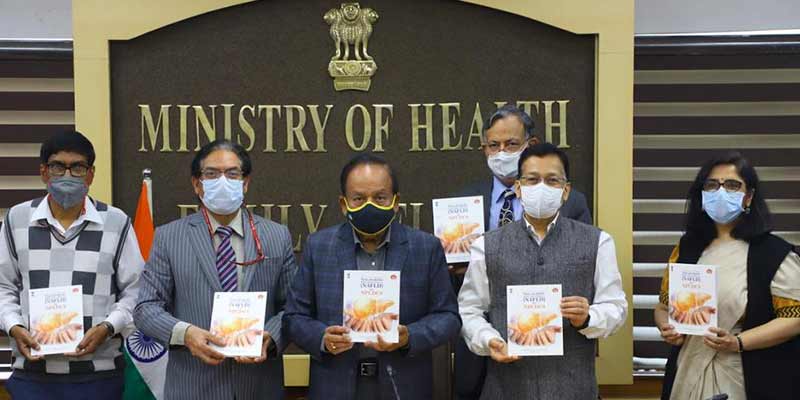- India
- Feb 22
- Mathew Gregory
Operational guidelines launched for integration of Non-Alcoholic Fatty Liver Disease with NPCDCS
Government has launched the operational guidelines for Integration of NAFLD (Non-Alcoholic Fatty Liver Disease) with NPCDCS (National Programme for Prevention & Control of Cancer, Diabetes, Cardiovascular Diseases and Stroke).
About NAFLD
• NAFLD, the abnormal accumulation of fat in the liver in the absence of secondary causes of fatty liver, such as harmful alcohol use, viral hepatitis, or medications.
• It is a serious health concern as it encompasses a spectrum of liver abnormalities, from a simple non-alcoholic fatty liver (NAFL, simple fatty liver disease) to more advanced ones like non-alcoholic steatohepatitis (NASH), cirrhosis and even liver cancer.
• Over the last two decades’ global burden of NASH has more than doubled.
• Globally, NASH caused 40 lakh prevalent cases of compensated cirrhosis in 1990, which increased to 94 lakh cases in 2017. NAFLD is emerging as an important cause of liver disease in India.
• Epidemiological studies suggest the prevalence of NAFLD is around 9% to 32% of the general population in India with a higher prevalence in those with overweight or obesity and those with diabetes or prediabetes.
• Hence the tackling NAFLD is an important step towards tackling the country’s burden of non-communicable diseases.
• Researchers have found NAFLD in 40% to 80 % of people who have type 2 diabetes and in 30% to 90 % of people who are obese.
• Studies also suggest that people with NAFLD have a greater chance of developing cardiovascular disease.
• Cardiovascular disease is the most common cause of death in NAFLD.
• Once the disease develops, there is no specific cure available, and health promotion and prevention aspects targeting weight reduction, healthy lifestyle, and control of aforementioned risk factors are the mainstays to disease progression and prevent the mortality and morbidity due to NAFLD.
GoI Plan of Action
• NAFLD is an independent predictor of future risk of cardiovascular diseases, type 2 diabetes and other metabolic syndromes like hypertension, abdominal obesity, dyslipidaemia, glucose intolerance.
• The Government of India is of the view that existing NPCDCS programme strategies can easily be aligned to prevent NAFLD through lifestyle changes, early diagnosis, and management of associated non-communicable diseases as well as NAFLD.
• Accordingly, doable actions have been identified with main focus on health promotion and prevention of common NCDs which would also specifically cater to the identified needs of NAFLD.
• Health Minister also declared that India is becoming the first country in the world to identify the need for action for NAFLD.
• The Government of India has realized that the existing NCD programme’s strategies can now be aligned to achieve the objectives to prevent and control NAFLD with:
◦ behavior and lifestyle changes,
◦ early diagnosis and management of NAFLD,
◦ building of capacity at various levels of healthcare for prevention, diagnosis and treatment of NAFLD.
• Ayushman Bharat programme has so far screened 838.39 lakh people for hypertension, 683.34 lakh for diabetes and 806.4 lakh for the three common forms of cancer through the Health and Wellness Centres (HWCs).
• Along with the focus of ‘Eat Right India’ and ‘Fit India Movement’, the entire vision of the government is to move from Diagnostic Cure to Preventive Health.
(The author is a trainer for Civil Services aspirants. The views expressed here are personal.)

